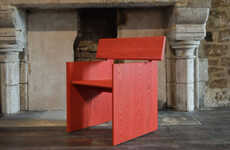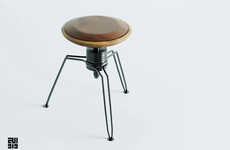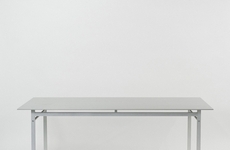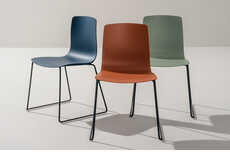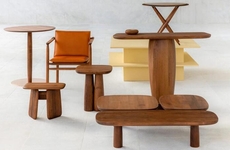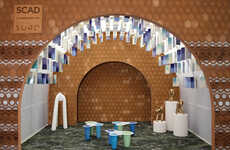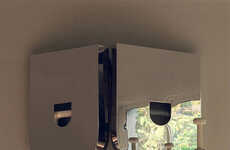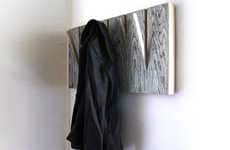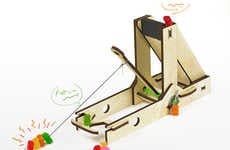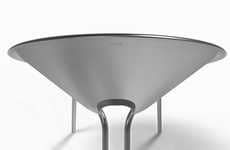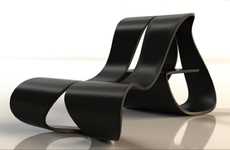
Sharjah Design College's Alumni Collection Redesigns Muslim Rituals
Milla Kiss — April 29, 2012 — Art & Design
References: aus.edu & designdaysdubai.ae
The American University of Sharjah's College of Architecture, Art and Design -- CAAD -- was the first University of the Middle East that was invited to exhibit its design alumni's work at the prestigious Salone Satellite 2012 exhibition of the 2012 Milan Design Week.
The CAAD collection brought design-loving spectators a surprising and striking visual experience. Looking at the works in details, the CAAD collection is even more refreshing and thought-provoking, as the pieces reinterpret profound Muslim rituals, reflect on the Arab Spring Revolutions and more.
Some of the most spectacular CAAD collection pieces include Sarah Alagroobi’s project, entitled 'Amal’s Prayer Chair,' which was developed following deep religious considerations as well as modern functional design principles. Designer Alagroobi developed the wonderfully curvy prayer chair for her grandmother unable to pray in a prostrate position.
Another gem of the CAAD collection is the "D-Bench" by Danah Al Kubaisy, which reflects on turmoil and deregulation. The CAAD D-Bench visually represents the contrast of order and chaos.
Other CAAD works reflecting on contemporary Arab life are Rasha Dakkak's Veto (citing directly the Arab Spring Revolutions), Maha Habib's "The Thinker's Chair" and Heba Hammad's The Candelabra.
Additional CAAD photo: http://amirberbic.com/wp-content/uploads/2012/04/CAAD_at_Salone1.jpg
The CAAD collection brought design-loving spectators a surprising and striking visual experience. Looking at the works in details, the CAAD collection is even more refreshing and thought-provoking, as the pieces reinterpret profound Muslim rituals, reflect on the Arab Spring Revolutions and more.
Some of the most spectacular CAAD collection pieces include Sarah Alagroobi’s project, entitled 'Amal’s Prayer Chair,' which was developed following deep religious considerations as well as modern functional design principles. Designer Alagroobi developed the wonderfully curvy prayer chair for her grandmother unable to pray in a prostrate position.
Another gem of the CAAD collection is the "D-Bench" by Danah Al Kubaisy, which reflects on turmoil and deregulation. The CAAD D-Bench visually represents the contrast of order and chaos.
Other CAAD works reflecting on contemporary Arab life are Rasha Dakkak's Veto (citing directly the Arab Spring Revolutions), Maha Habib's "The Thinker's Chair" and Heba Hammad's The Candelabra.
Additional CAAD photo: http://amirberbic.com/wp-content/uploads/2012/04/CAAD_at_Salone1.jpg
Trend Themes
1. Redefining Rituals - Designers are reinterpretating Muslim rituals, creating innovative products that blend religious traditions with modern functionality.
2. Reflecting on Turmoil - Designers are using their work to reflect on social and political upheavals, exploring themes of chaos and deregulation in their designs.
3. Contemporary Arab Life - Designers are creating pieces that capture the essence of contemporary Arab life, addressing themes like the Arab Spring Revolutions.
Industry Implications
1. Furniture Design - There is an opportunity to create furniture that meets the unique needs of Muslim rituals while incorporating modern styles and functionality.
2. Interior Design - Interior designers can utilize innovative designs that reflect on social and political turmoil, creating spaces that evoke a sense of chaos or contrast.
3. Fashion Design - Fashion designers can draw inspiration from contemporary Arab life, incorporating cultural elements and addressing the themes of social change and revolution.
5
Score
Popularity
Activity
Freshness

